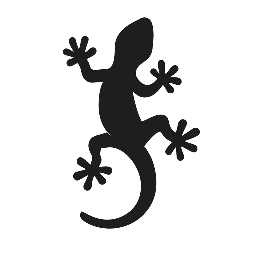We’ve all heard the saying, “You are what you eat.” It’s a cornerstone of our own health, and the same principle applies directly to our pets. For reptile owners, this concept is one of the most important aspects of proper care. You can offer your bearded dragon, leopard gecko, or chameleon the plumpest insects, but if those insects have no nutritional value, you’re essentially feeding your pet a crunchy, hollow snack.
This is where gut-loading comes in.
In simple terms, gut-loading is the process of feeding your feeder insects a highly nutritious diet before you feed them to your pet. It’s a simple, game-changing step that transforms an “empty” insect into a nutrient-packed vehicle, delivering essential vitamins and minerals directly to your reptile.
Why is Gut-Loading So Crucial?
Most commercially available feeder insects, like crickets and mealworms, are not naturally rich in the nutrients your reptile needs to thrive. Left to their own devices, they subsist on simple grains or bran, which does little to build up their nutritional profile. They are often low in calcium and high in phosphorus.
This is a problem because high phosphorus levels can block calcium absorption in reptiles, leading to a devastating condition called Metabolic Bone Disease (MBD). MBD causes weak, soft, and deformed bones and can be fatal if not addressed.
By gut-loading, you are filling the insect’s digestive tract (its gut) with a powerhouse of vitamins and minerals. When your reptile eats that insect, it digests not only the insect itself but also the entire nutrient-rich meal contained within it.
The “How-To” of Gut-Loading
Gut-loading is easy to master. It just requires a little planning.
1. Timing is Everything
The ideal window for gut-loading is 24 to 48 hours before feeding the insects to your pet. This ensures the nutritious meal is still in the insect’s gut, ready for your reptile to absorb. If you wait longer, the insect will simply digest and use the nutrients for its own energy.
2. The Right Setup
You don’t need anything fancy. Simply move the insects you plan to feed off into a separate, clean container (a small plastic tub or a cricket keeper works perfectly). This will be their “dining room.”
3. The Gut-Load Meal
This is the most important part. You can use a high-quality commercial gut-load formula, or you can create your own super-charged DIY mix. A combination of both is often best!
Excellent DIY Gut-Loading Foods:
- High-Calcium Greens: Collard greens, mustard greens, turnip greens, and dandelion greens.
- Vitamin-Rich Veggies: Grated sweet potato, butternut squash, and carrots (great sources of Vitamin A).
- Healthy Grains & Powders: Rolled oats, alfalfa meal, bee pollen, and spirulina powder.
- Fruits (for hydration & nutrients): Apple or orange slices.
4. Don’t Forget Hydration!
Insects need water to live, but an open water dish is a drowning hazard. Instead, provide hydration through:
- Commercial water crystals or gels.
- A damp paper towel.
- Water-rich foods like a slice of potato, carrot, or orange.
What NOT to Use for Gut-Loading
Remember, whatever the insect eats, your reptile indirectly eats. Avoid foods that are low in nutrition or toxic to reptiles.
- Foods to Avoid:
- Dog or cat food (too high in protein, fat, and incorrect nutrients).
- Fish flakes (poor nutritional value).
- Anything toxic to reptiles: Avocado, onion, garlic, rhubarb.
- Foods high in oxalates like spinach, which can interfere with calcium absorption.
A Simple Gut-Loading Recipe
Ready to get started? Here’s a quick and effective recipe to supercharge your insects:
- In a small dish, mix together:
- 1 tablespoon of finely chopped collard greens
- 1 tablespoon of grated carrot or sweet potato
- 1 teaspoon of rolled oats
- Place this mixture in your insect container.
- Add a slice of orange for hydration.
- Let the insects feast for 24 hours.
After that, they are ready to be dusted with a calcium supplement and served to your very happy reptile.
Gut-loading is a non-negotiable part of responsible reptile ownership. It’s an incredibly simple and effective way to prevent illness and ensure your scaly friend lives a long, vibrant, and healthy life. Don’t just feed your pet—nourish them!

Leave a Reply